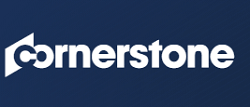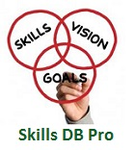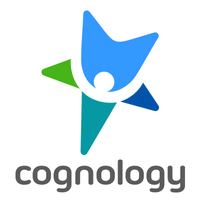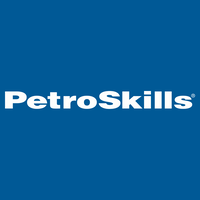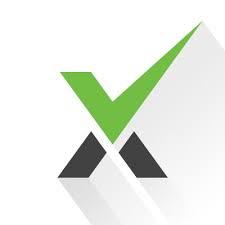What Is Competency Management System?
A Competency Management System (CMS) is a software platform that helps firms identify, develop, and measure their employees' skills and competencies. This approach is an effective tool for firms to align their personnel with their strategic objectives, increase performance, and achieve corporate success.
Essentially, a CMS collects all relevant information about an employee's competencies, such as their knowledge, skills, behaviors, and experience, and uses that information to provide a holistic perspective of an organization's talent pool. One of the most important elements of a CMS is its capacity to generate a competency framework, which establishes a standard language for assessing and growing staff competencies. This framework typically consists of a collection of well-defined competences and competency levels that are linked to job functions and corporate goals.
Using this paradigm, firms may objectively assess employee skills and identify areas for improvement, allowing them to make more informed decisions about promotions, succession planning, and training and development programs. Furthermore, a CMS provides powerful capabilities for designing individual development plans for employees, allowing them to take control of their professional advancement while remaining engaged in their roles.
These plans frequently contain a wide range of learning resources, like as training courses, job rotations, mentorship programs, and online courses, all tailored to each employee's specific needs. A CMS promotes a learning culture and ongoing skill development within the organization by offering tailored and continuous development opportunities. A CMS not only supports staff growth, but it also enables thorough performance tracking and measurement. Managers can evaluate employee growth and identify any skills or competency gaps that may require addressing by conducting regular evaluations and providing feedback.
This data-driven approach to performance management allows firms to make data-driven decisions about employee promotions, performance evaluations, and remuneration. Furthermore, a competency management system can be integrated with other HR tools, such as performance management systems, learning management systems, and recruiting platforms, to provide a streamlined and effective talent management workflow.
This connection minimizes manual data entry, decreases administrative effort and human error, and provides a comprehensive view of an organization's personnel, allowing for efficient talent planning and management.
What Are The Recent Trends In Competency Management System?
Competency management systems have grown greatly in recent years to meet the changing demands of today's workplaces. As firms attempt to remain competitive in a fast-paced and constantly changing world, effective competency management has become increasingly important.
we'll look into the latest trends in competency management systems and how they might help your firm.
1. Concentrate On Behavioral Qualities: Traditional competency management systems were primarily concerned with technical skills and qualifications. However, in today's business, soft skills and behavioral abilities are just as crucial. This tendency has resulted in the development of competency management systems that evaluate and enhance a variety of abilities, including communication, teamwork, leadership, and flexibility.
2. Automation And Integration: As firms increasingly incorporate technology into their processes, competency management systems have embraced automation and integration. This involves automating the assessment process, monitoring skill growth, and connecting with other HR systems like performance management and learning management. This tendency has led to a more streamlined and effective competency management approach.
3. Move Towards Constant Improvement: Annual performance reviews and one-time training sessions are no longer the norm. Employees today demand ongoing feedback and opportunity for professional development. As a result, competency management systems increasingly prioritize continuing skill development via personalized learning plans and constant assessment. This trend assures that people are always improving and adapting to ever-changing employment requirements.
4. Increased Emphasis On Data And Analytics: With the advent of big data and analytics, competency management systems have evolved to give data-driven insights. This includes monitoring and analyzing employee performance, determining skill gaps, and forecasting future training requirements. These data-driven insights enable better informed decision-making and strategic planning.
5. Embracing A Multigenerational Workforce: The current workforce is more diversified in terms of age and experience than ever before. As a result, competency management systems have evolved to be more inclusive, accommodating to the needs and preferences of many generations. For example, using gamification and microlearning for younger staff while providing more traditional training approaches for senior employees.
Benefits Of Using Competency Management System
The ability to successfully manage staff abilities is critical to any organization's success. This is where a competency management system (CMS) comes into play. A content management system (CMS) is a strong tool that allows firms to streamline their personnel management procedures as well as assess and enhance employee talents. Here are some compelling advantages of installing a CMS in your organization:
1. Identify And Fill Skill Gaps: A competent staff is critical to attaining corporate objectives. A CMS allows you to determine your employees' present skills and competencies and compare them to the desired ones. This allows you to identify any talent shortages and establish training or hiring strategies to fill them.
2. Streamline Performance Management: A CMS can be integrated into your performance management system, making it easier to align employee goals with business objectives. It also enables more precise assessments of employee performance because competences can be linked to specific job positions and responsibilities.
3. Personalized Development Plans: With a CMS, you can design personalized development plans for each employee based on their competency evaluation. This contributes to developing their strengths, improving their deficiencies, and, ultimately, raising their total performance and productivity.
4. Increase Employee Engagement: When employees realize that their employer is interested in their professional development, they become more engaged and driven. A CMS gives employees visibility into their competencies and progress, allowing them to understand what abilities they need to develop in order to grow in their careers.
5. Assist With Succession Planning: A CMS enables firms to identify high-potential employees and build development plans to prepare them for future leadership positions. This assures a consistent pipeline of competent leaders while lowering the risk of losing top personnel.
6. Improve Hiring And Onboarding: A CMS allows you to specify the necessary competencies for each job role and use them as a benchmark during the hiring process. This ensures that you hire individuals with the essential abilities and can contribute to the organization's success from the start.
7. Improved Compliance and Risk Management: A CMS assists firms in complying with regulatory and industry standards by recording and monitoring required competences for specific roles. This decreases the likelihood of noncompliance and any resulting consequences.
Important Factors To Consider While Purchasing Competency Management System?
When choosing a Competency Management System (CMS), you must examine numerous criteria to guarantee that you are making the appropriate decision. A CMS is an essential tool for any organization seeking to manage and enhance its workforce's skills and knowledge. Therefore, it is important to thoroughly analyze the following factors before settling on a CMS:
1. Scalability: The CMS's scalability is a vital issue to consider. Your organization's training requirements will expand as it grows. As a result, it is critical to select a system that can meet your future requirements, whether they include adding additional users or growing functionalities.
2. User-Friendly Interface: An easy-to-use interface is critical for the CMS's effective implementation and adoption. It should be simple to use and understand, especially for non-technical users. A difficult interface can elicit employee opposition, resulting in a disastrous implementation.
3. Customization: Every firm has its own set of competences and training needs. As a result, it is critical to select a CMS that enables for customization based on your individual requirements. This will guarantee that the system is consistent with your organization's aims and supports your specific competency framework.
4. Integration Capabilities: In today's digital landscape, it is critical to have a CMS that can communicate with other systems, such as a Learning Management System (LMS) or Human Resources Information System (HRIS). Integration promotes the smooth flow of data between systems, saving time and resources.
5. Reporting And Analytics: A strong CMS should include extensive analytics and reporting features. This allows you to track your employees' progress, discover skill gaps, and make data-driven decisions about training and development activities.
6. Mobile Accessibility: Given the growing popularity of remote work and the use of mobile devices, it is critical to select a CMS with a mobile-friendly interface. Employees will be able to access training materials and evaluations at any time and from any location, encouraging a continuous learning culture.
7. Security: When working with sensitive employee information, security is paramount. Choose a CMS with strong security features, such as encryption, to secure your data from cyber threats.
8. Customer Help: As with any product, it is critical to have dependable customer help in the event of any technical problems or questions. Consider a CMS provider that provides timely and extensive customer support to ensure that the system is implemented and used smoothly. To summarize, selecting the correct Competency Management System necessitates careful evaluation of these critical factors. It is critical to select a system that corresponds with your organization's goals, fosters a culture of continuous learning, and offers a smooth user experience. Keeping these aspects in mind, you can make an informed selection and invest in a CMS that will help and improve your workforce's skills and capabilities.
What Are The Key Features To Look For In Competency Management System?
When it comes to selecting a competency management system for your firm, there are numerous important factors to consider. These characteristics will not only ensure that your system fulfills your current requirements, but also that it can grow and adapt to your organization's future needs.
1. Customizable Competency Framework: A competency framework serves as the cornerstone for any competency management system. This is a collection of established competences, including abilities, habits, and knowledge, that are required for job performance. It is critical to select a system that allows you to develop a configurable competency framework matched to your organization's specific needs and goals.
2. Flexible Assessment Methods: A effective competency management system should include a number of assessment options, including self-assessment, peer evaluation, and manager assessment. This enables a more comprehensive and accurate assessment of an employee's competencies. Furthermore, the system should allow a variety of assessments, including behavioral-based interviews, 360-degree feedback, and simulations, to ensure a comprehensive review.
3. Training And Development Plans: An effective competency management system should give employees with training and development plans based on the outcomes of their assessments. This helps employees develop their skills and behaviors, resulting in higher overall performance. Look for a system that can provide individualized training recommendations based on an employee's competency gaps.
4. Real-Time: Performance tracking and feedback are critical components of any competency management system. This enables employees to track their progress and receive continuous feedback for improvement. A good system should be able to track performance against certain skills as well as provide data-driven decision-making insights.
5. Integration With HR Systems: Combining your competency management system with other HR systems, such as performance management and learning management, can help to expedite operations and provide a more comprehensive perspective of employee growth. Look for a solution that allows for seamless connectivity to eliminate manual data entry and maintain consistency in personnel data.
6. User-Friendly Interface: A user-friendly interface is critical for user acceptance and simple system navigation. Look for a system that is intuitive and visually appealing, with a simple interface and reporting capabilities. This saves time and allows employees to better track their progress and development.
7. Mobile Accessibility: In today's fast-paced workplace, having access to a competency management system on the go is essential. Look for a system that is mobile-friendly, allowing employees and supervisors to use it from anywhere at any time.
Why Do Businesses Need Competency Management System?
A Competency Management System (CMS) is a critical tool for firms seeking to improve personnel productivity and performance. It is a software-based platform that enables organizations to identify, measure, develop, and manage staff skills in order to promote business success. Here are some important reasons why firms require a Competency Management System.
1. Clearly Defined Job Roles And Expectations: A Competency Management System helps firms establish and express the key competencies required for each employment role. This ensures that expectations are clear and consistent, helping employees to comprehend and match their goals with the organization's objectives.
2. Streamlined Recruiting And Selection Process: A CMS allows firms to determine the needed competences for a specific job function and then use that knowledge to expedite the recruiting and selection process. This aids in recruiting the right people with the essential skills and abilities, hence increasing the overall efficiency and effectiveness of the recruitment process.
3. Performance Management: CMS offers a complete performance management system that tracks employees' progress against established skills. This enables managers to discover skill gaps and provide timely feedback and training to boost employee performance and productivity.
4. Personalized Learning And Development: A Competency Management System allows firms to design customized learning and development plans for employees based on their skills and skill gaps. This aids in upskilling and reskilling personnel to match changing business demands, resulting in a competitive advantage for the organisation.
5. Succession Planning: CMS enables firms to identify high-potential workers and develop succession plans to fill crucial jobs within their organizations. This ensures business continuity while reducing the impact of important personnel turnover.
6. Effective Training And Development: Using the identified competencies, firms can create tailored training programs to increase certain skills and competencies among employees. This leads in a more effective and efficient training process, which improves employee performance and productivity.
How Much Time Is Required To Implement Competency Management System?
The implementation timeframe for a Competency Management System (CMS) varies depending on a number of criteria, including the size of the business, the complexity of the competency framework, and the level of customization necessary. Typically, the implementation phase can last from a few weeks to several months.
1. Identifying Needs And Defining Objectives: The first stage in deploying CMS is to examine the organization's needs and goals. This includes identifying the essential abilities needed for different positions, defining performance goals, and developing measurement criteria. Depending on the size and complexity of the organization, this process can take 2-4 weeks.
2. Selecting A CMS Provider: Once the objectives have been specified, the following step is to choose a CMS supplier. This entails investigating and evaluating multiple vendors based on aspects such as price, features, and user-friendliness. The selection process can take two to three weeks, depending on the extent of due diligence required.
3. Customization & Integration: After selecting a CMS provider, the system must be modified to meet the organization's specific requirements. This includes integrating with existing HR systems, implementing the competency framework, and defining user access and rights. Customization and integration can take 1-2 months, depending on the organization's complexity.
4. Training And Testing: Once the CMS has been installed and modified, the following step is to train people on how to utilize it efficiently. This includes writing user manuals, holding training sessions, and assisting with any technical concerns. Testing the system to confirm that it satisfies the organization's requirements and making any necessary changes can take an additional 2-3 weeks.
5. Launch And Ongoing Maintenance: The final step in implementing a CMS is to launch and constantly maintain it. This includes scheduled backups, upgrades, and user support. The duration of continuing maintenance varies according to the size of the organization and the quantity of resources allocated to it. Overall, the implementation of a CMS might take anywhere from 2 to 6 months, depending on the organization's specific requirements and resources. It is critical to remember that excellent planning and communication can have a substantial impact on timelines and assure successful implementation.
What Is The Level Of Customization Available In Competency Management System?
When looking for a Competency Management System (CMS), you should examine the level of customisation offered. A CMS's customization capabilities enable organizations to modify the system to their exact requirements, ensuring that it corresponds with their unique business processes and goals. First and foremost, seek for a CMS that allows for a great level of customisation.
This means that the system must be able to adapt and evolve as the organization's requirements change over time. It should also allow for various levels of modification, ranging from minor adjustments to the interface to more sophisticated changes to the system's function. One important component of customization is the ability to develop and define competences that correspond to the organization's specific job positions and tasks.
A decent CMS should enable the construction of specific competency profiles that are suited to each particular function inside the firm. This level of personalization guarantees that the system appropriately represents the skills and knowledge necessary for each role. Another key customization option to consider is the ability to include the organization's existing competency frameworks or models into the system.
This provides for a smooth transition and ensures that the CMS is built on a familiar and relevant base for the organization. In addition to competency profiles, a CMS should provide specific tracking and reporting options. This enables employers to track and assess employee progress and performance on certain competencies, as well as generate reports that provide useful information about employee development and training needs.
Finally, select a CMS that supports branding customisation. This means that the system's aesthetics can be tailored to match the organization's branding and culture. This not only results in a more consistent user experience, but it also serves to promote the organization's brand identity.
Which Industries Can Benefit The Most From Competency Management System?
"Industries that place a high value on employee development and performance might benefit substantially from establishing a Competency Management System (CMS). This includes, but is not limited to:
1. Healthcare Business: With ever-changing technologies and severe regulatory standards, the healthcare business relies largely on qualified and competent employees. CMS can help identify and bridge competency gaps in healthcare personnel, resulting in greater quality treatment and compliance with standards.
2. Information Technology (IT) Industry: In the fast-paced world of IT, staying current on the latest skills and technology is critical to success. A CMS can assist IT organizations in tracking employee capabilities and providing individualized training and development strategies to remain competitive in the market.
3. Manufacturing Industry: In the highly sophisticated and complicated manufacturing industry, staff competency has a direct impact on product quality and efficiency. CMS can assist speed the skills evaluation and development process, resulting in a more trained staff and increased overall productivity.
4. Education Industry: A CMS can be an effective instrument for measuring the competences and professional development of teachers and faculty members. This can lead to better student results and increased teacher effectiveness.
5. Retail And Hospitality Industries: Employee competencies can have a significant impact on consumer happiness and loyalty. A CMS can help detect skill gaps, provide focused training, and eventually improve the customer experience. It is crucial to highlight that, while these industries may benefit the most from a CMS, any organisation that values employee growth and development might profit from implementing one.
Conclusion
In conclusion, a Competency Management System (CMS) is an essential tool for businesses aiming to increase their workforce's abilities and overall performance. It is a comprehensive solution that assists firms in identifying, assessing, and developing their employees' skills, ensuring alignment with corporate objectives and plans. When selecting a CMS, it is critical to analyze your organization's specific requirements and goals.
Look for a system that has customized features and can be readily integrated with your current HR and performance management systems. It should also have a user-friendly interface for both employees and supervisors, providing for quick access to competency profiles, training resources, and performance reviews. A reputable CMS should also include extensive tracking and reporting features, allowing you to analyze progress and make data-driven decisions.
Consider a system that provides ongoing support and updates, as well as complete team training, to ensure effective implementation and adoption. Finally, investing in a high-quality CMS can result in higher employee happiness, productivity, and business outcomes. With the appropriate system in place, your firm can efficiently manage competencies, build a culture of learning and development, and remain competitive in today's ever-changing workplace. With this buyer's guide, we hope you have a thorough understanding of CMS and can confidently choose the best suit for your organization's requirements.










